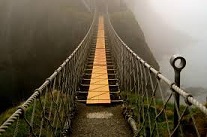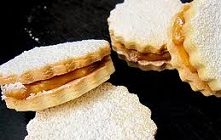Machu Picchu Rope Bridge was a secret entrance for the Inca army during the Inca Empire. Read our guide for more facts and information…
Machu Picchu is surrounded by a loop of Urubamba River, which flows through the three sides of Machu Picchu. The rope bridges are high altitude bridges that were used by the Inca army as a secret route. These bridges could be blocked whenever not in use.
Inca Rope Bridge
The bridge is for crossing the Urubamba River southeast of Cusco in the Pongo de Mainique. The suspension rope bridge is made from natural fibers available locally. The fibers are woven together to make them strong rope, and cable floor is made by wood. Each side of the rope is attached to the canyon rocks with massive woven grass cables. This bridge is quite a heavy one, hence it has a tendency to sag in the middle and sways under strong winds. Every year, the ropes of the cable are renewed as they go through a lot of wear and tear, and this ritual is followed till date.
KeshwaChaca Bridge
KeshwaChaca, considered as the last remaining Inca Rope Bridge, is renewed every year even though a modern bridge has been made for normal use. The renewal of the rope every year is to keep the ancient tradition and skill alive. The annual renewal of the bridge is a tourist attraction, which also includes a walk for the visitors on the bridge by paying a small amount as toll.
Machu Picchu Tree Trunk Bridge
Tree Trunk Bridge, located west of Machu Picchu, is to connect two cliffs 6 meters apart by tree trunks. Once the tree trunks are removed there is a fall that measures 570 meters to the base. This bridge was also made for the same purpose by the Inca army as a secret road to reach Inca city for messengers during the Inca Empire and these tree trunks could be removed when not needed or during attacks in ancient times. It is located at the rear entrance of the citadel and visitors are not allowed to use it due to the steep valley underneath. Still, one can approach it and take pictures of the bridge.
The best part of having these bridges is that they can be used during the heavy rainy season when walking on foot can be difficult on normal bridges.





